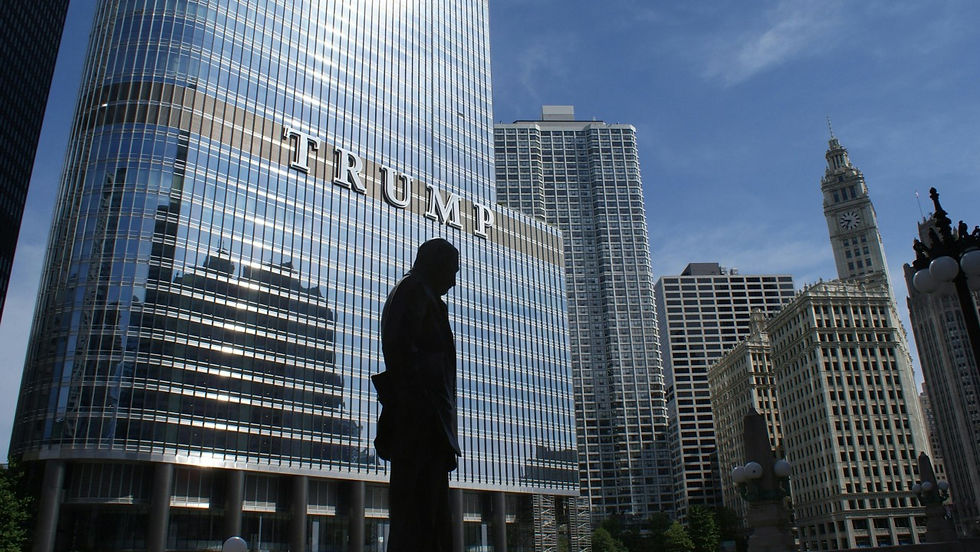The Art of The Deal?
- info060991
- Aug 4, 2025
- 3 min read
When President Trump announced sweeping tariffs on America’s biggest trading partners back in April, critics from across the political spectrum lined up to condemn the move. Economists warned of higher prices, businesses braced for losses, and foreign leaders expressed outrage. As deadlines were delayed and tariffs rolled back, the FT mockingly coined the term ‘TACO’ (Trump Always Chickens Out) to summarise this administration’s strategy.
Yet here we are, several months later, and the outlook looks remarkably different. The evidence suggests that, despite the skepticism, Trump may actually be winning his much-maligned trade war.
Consider the results so far. Just this week, the EU has agreed to purchase £558 billion in US energy and pledged to increase investment in the American economy by £459 billion, whilst Japan has committed to investing up to $550 billion in projects tied to the US. In June alone, the US Treasury collected $27 billion in customs revenue, up from just $7 billion in the same month a year earlier. That puts the country on pace to collect around $300 billion annually through tariffs, nearly 1 percent of GDP.
This is not the collapse that many had predicted. In fact, the economic disruption has been relatively contained. Yes, some US companies are feeling the pinch. General Motors posted a $1.1 billion loss last quarter attributed to tariffs, while Nike reported a $1 billion hit due to higher costs on imported goods. But the broader US economy has remained steady. Inflation has risen slightly, but consumer sentiment is holding firm. Markets have stayed resilient, even reaching new highs in recent weeks.
Trump’s strategy, while unconventional, appears to be delivering results. He has managed to extract concessions from major economies without triggering a full-scale trade war. Countries that initially threatened retaliation have largely stepped back. Most striking is the fact that many foreign leaders now see Trump’s “baseline” tariff of 10 percent as a reasonable outcome. In 2024, that figure would have been viewed as extreme. Today, it is often welcomed as a compromise.
These outcomes suggest that Trump’s trade policy is not just about economic protectionism. It is also about leverage. Trump has used the size of the US economy and its central position in global trade to force partners to the table on American terms. Whether those terms lead to long-lasting agreements remains to be seen, but the short-term impact is clear: the United States is setting the pace, and others are trying to keep up.
This approach reflects a broader trend in Trump’s foreign policy. While often criticised for being brash and unpredictable, he has managed to deliver some results that previous administrations struggled to achieve. After years of weak pressure from Washington, it was Trump’s brash approach that finally pushed several NATO members to increase their military budgets. The alliance is now more active and better funded than it has been in years, with Germany, France and the UK all agreeing to substantially boost defence spending.
Joining Israel in its strikes on Iran, which Trump pursued despite wide pushback from the MAGAsphere, has also not resulted in the apocalypse (for now). Instead, it helped bring the war between Israel and Iran to a swift end and has reportedly done severe and lasting damage to Iran’s nuclear program.
There is a pattern here. Trump’s approach to international affairs is rooted in confrontation, but it is also calculated. He is not interested in maintaining the status quo for the sake of appearances. He wants deals that benefit the United States, and he is willing to risk political fallout to get them. This has disrupted the old consensus on trade and diplomacy, but it has also produced some undeniable shifts in global dynamics.
That said, there are valid concerns about the long-term impact. The tariffs have increased costs for American companies that should eventually push up consumer prices. The uncertainty surrounding many of these trade deals may discourage future investment and Trump’s habit of changing course without notice has raised questions about America’s reliability as a negotiating partner. There is also the risk that countries frustrated with the current system may begin to look elsewhere. China, in particular, has been positioning itself as a more stable alternative, and that narrative may gain traction among the Global South.
For better or worse, this is what foreign policy looks like in the Trump era. It is noisy, unpredictable, and often lacking in polish, but after four months of revenue spikes and resurgent markets, the joke, at least for now, isn’t on him.




Comments